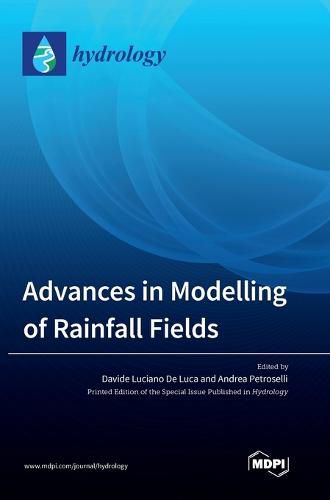Readings Newsletter
Become a Readings Member to make your shopping experience even easier.
Sign in or sign up for free!
You’re not far away from qualifying for FREE standard shipping within Australia
You’ve qualified for FREE standard shipping within Australia
The cart is loading…






This title is printed to order. This book may have been self-published. If so, we cannot guarantee the quality of the content. In the main most books will have gone through the editing process however some may not. We therefore suggest that you be aware of this before ordering this book. If in doubt check either the author or publisher’s details as we are unable to accept any returns unless they are faulty. Please contact us if you have any questions.
Rainfall is the main input for all hydrological models, such as rainfall-runoff models and the forecasting of landslides triggered by precipitation, with its comprehension being clearly essential for effective water resource management as well. The need to improve the modeling of rainfall fields constitutes a key aspect both for efficiently realizing early warning systems and for carrying out analyses of future scenarios related to occurrences and magnitudes for all induced phenomena. The aim of this Special Issue was hence to provide a collection of innovative contributions for rainfall modeling, focusing on hydrological scales and a context of climate changes.
We believe that the contribution from the latest research outcomes presented in this Special Issue can shed novel insights on the comprehension of the hydrological cycle and all the phenomena that are a direct consequence of rainfall. Moreover, all these proposed papers can clearly constitute a valid base of knowledge for improving specific key aspects of rainfall modeling, mainly concerning climate change and how it induces modifications in properties such as magnitude, frequency, duration, and the spatial extension of different types of rainfall fields. The goal should also consider providing useful tools to practitioners for quantifying important design metrics in transient hydrological contexts (quantiles of assigned frequency, hazard functions, intensity-duration-frequency curves, etc.).
$9.00 standard shipping within Australia
FREE standard shipping within Australia for orders over $100.00
Express & International shipping calculated at checkout
This title is printed to order. This book may have been self-published. If so, we cannot guarantee the quality of the content. In the main most books will have gone through the editing process however some may not. We therefore suggest that you be aware of this before ordering this book. If in doubt check either the author or publisher’s details as we are unable to accept any returns unless they are faulty. Please contact us if you have any questions.
Rainfall is the main input for all hydrological models, such as rainfall-runoff models and the forecasting of landslides triggered by precipitation, with its comprehension being clearly essential for effective water resource management as well. The need to improve the modeling of rainfall fields constitutes a key aspect both for efficiently realizing early warning systems and for carrying out analyses of future scenarios related to occurrences and magnitudes for all induced phenomena. The aim of this Special Issue was hence to provide a collection of innovative contributions for rainfall modeling, focusing on hydrological scales and a context of climate changes.
We believe that the contribution from the latest research outcomes presented in this Special Issue can shed novel insights on the comprehension of the hydrological cycle and all the phenomena that are a direct consequence of rainfall. Moreover, all these proposed papers can clearly constitute a valid base of knowledge for improving specific key aspects of rainfall modeling, mainly concerning climate change and how it induces modifications in properties such as magnitude, frequency, duration, and the spatial extension of different types of rainfall fields. The goal should also consider providing useful tools to practitioners for quantifying important design metrics in transient hydrological contexts (quantiles of assigned frequency, hazard functions, intensity-duration-frequency curves, etc.).